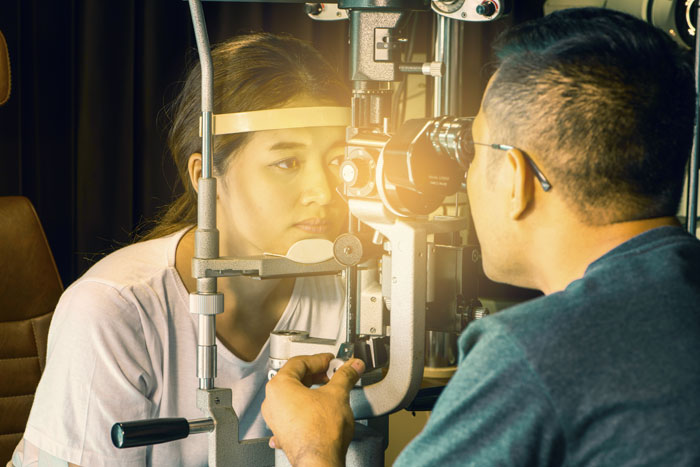+91-7291089674 (Bandra)
+91-7291092120 (Kandivali)





October 14, 2022 | Author: Admin
– Dr Niteen Dedhia, Dr Rushita Kamdar
Pigmentary glaucoma is a type of glaucoma brought on by pigment dispersion syndrome (PDS). PDS occurs when pigment granules (the pigments that give your eyes their colour) flake off the iris and end up in the clear fluid of your eye, known as the aqueous humour (release of execessive pigment in the anterior segment of the eye.)
Another possibility is that your iris and lens are in contact, so that when you look around and focus your eyes on different text or objects, your iris rubs against the lens. As a result, some of the iris’s pigment flakes off before it enters the aqueous humour. Mild pigment dispersion, on the other hand, is a normal part of the ageing process and is nothing to be concerned about as long as your eye pressure is normal.
According to experts, approximately one-third of PDS patients develop pigmentary glaucoma. Glaucoma develops when the pigment in the aqueous humour clogs the drainage system of the eye, causing pressure to build up inside the eye. Some people with PDS can tolerate extra pigment in their aqueous humour and it drains normally. On the other hand, some people find that it significantly raises their eye pressure, putting them at risk of pigmentary glaucoma. PDS affects both men and women equally, but men are three times more likely than women to develop pigmentary glaucoma. Furthermore, 80% of people with PDS are myopic, indicating that being short-sighted is a significant risk factor for the condition.
When your eye pressure is higher than it should be for an extended period of time, you run the risk of damaging your optic nerve. Black spots appear across your visual field as a result of optic nerve damage, as does loss of colour vision. This happens when the optic nerve fibres die as a result of high eye pressure. Often, people notice that glaucoma affects their peripheral vision first. However, by the time you notice it, it is too late to recover any lost vision.
PDS is often asymptomatic and can only be detected during a routine eye exam. It causes pigmentary glaucoma, which is most commonly diagnosed in people in their twenties, thirties, and forties. This is significantly younger than the average age at which other types of glaucoma develop and are diagnosed. Although PDS is often asymptomatic, the following symptoms may occur:
If you notice any of these symptoms, or if you have pigmentary glaucoma symptoms such as black spots in your visual field, see your optician as soon as possible. There are treatment options available, and even if your vision has not been affected yet, regular monitoring is essential to determine if and when treatment is required.
Ocular examination – careful slit lamp examination is important to look for the presence of pigment granules. Iris should be examined for any defect. Lens should be examined for the presence of pigment on the anterior segment .angle of anterior chamber should be examined for any pigment deposition. intraocular pressure should be measured.
If pigment dispersion syndrome is detected during a routine eye exam and you have no symptoms, you probably won’t need any medication or treatment right away. Mild pigment dispersion, as mentioned briefly in the first paragraph, is a normal part of the ageing process of the eye. Only when your eye pressure rises and you begin to show signs of glaucoma should you take action.
Because vigorous exercise can cause pigment release, some patients with a high number of pigment deposits in their eyes are advised to avoid vigorous exercise whenever possible, or to take medication to lower their eye pressure before engaging in a strenuous workout. One of the main treatment options for people with pigment dispersion syndrome is medication to lower their eye pressure, which usually comes in the form of medicated eye drops.
Laser treatment may be recommended in severe cases of PDS or when your eye pressure becomes so high that it affects your optic nerve. In this type of surgery, the laser is used to make a small hole in your iris to treat pigmentary glaucoma. This does not improve your vision; instead, it helps to shift the anatomy of your eye so that there is less rubbing between the iris and lens, resulting in less pigment release.
If you suspect you have PDS or are concerned about symptoms of glaucoma, see us for a check-up at Ojas Eye Hospital. We will be able to advise you on the best course of action and arrange for any sight-saving treatment that is required.